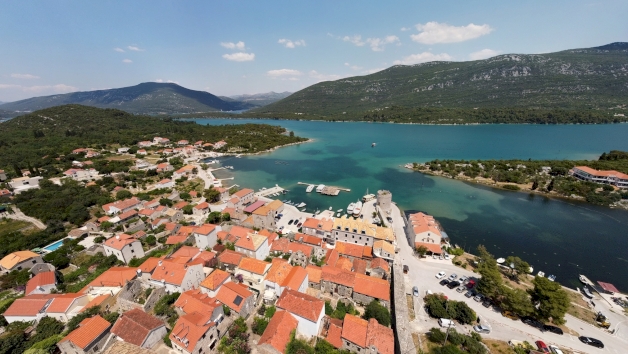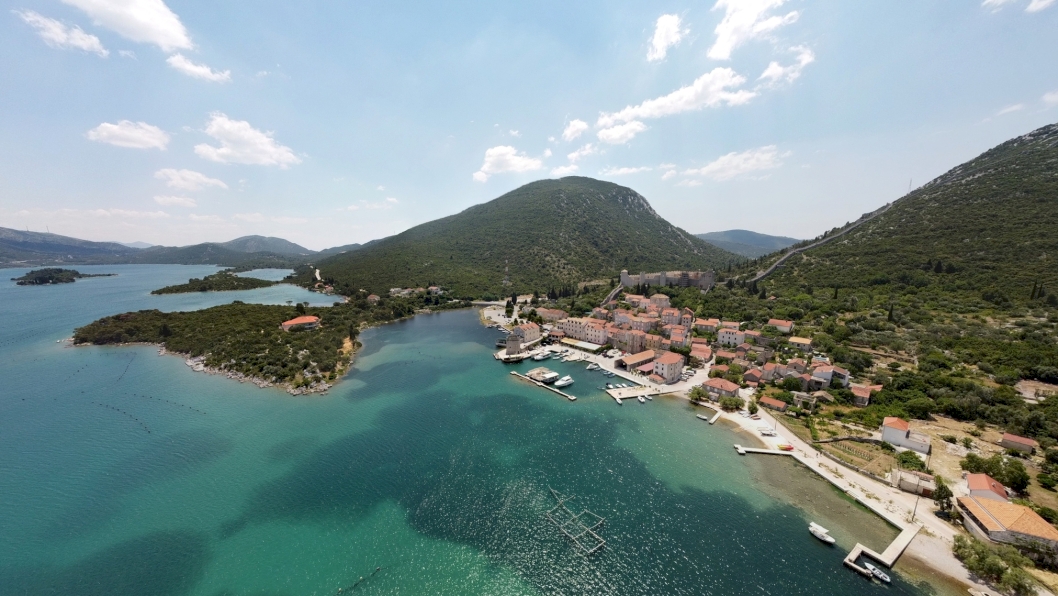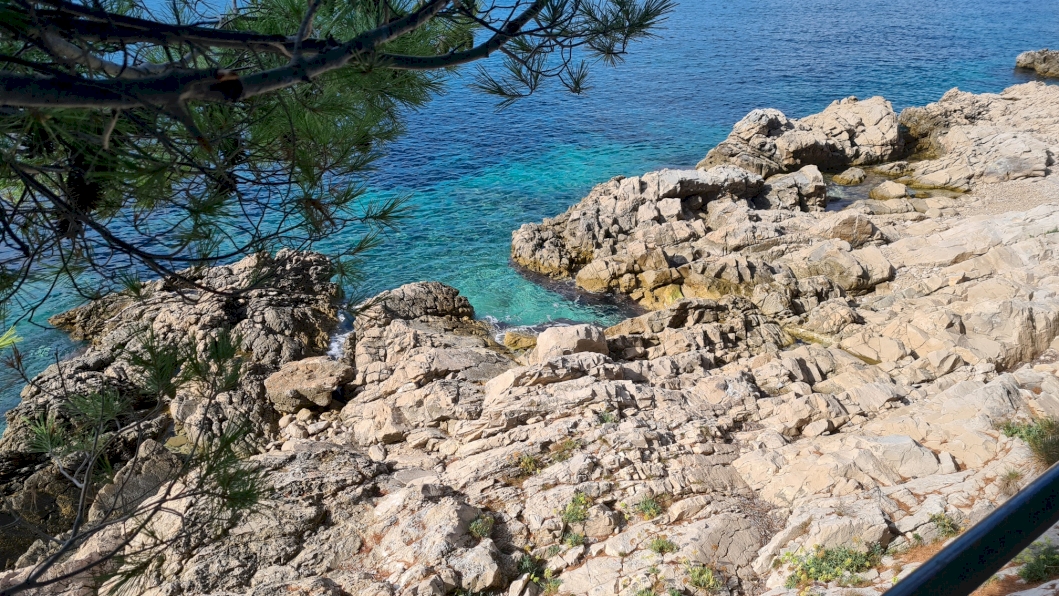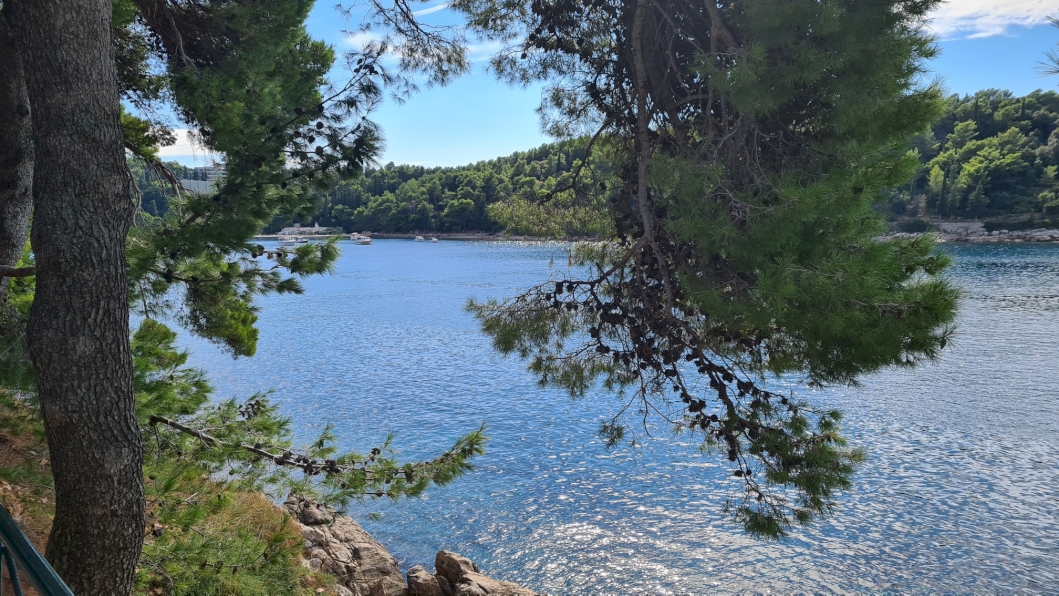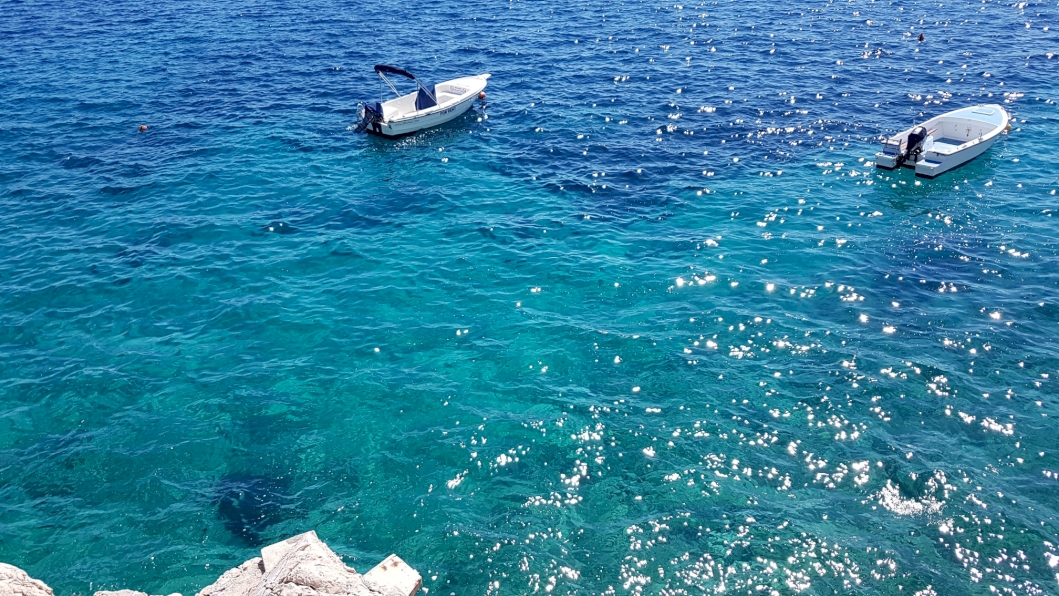The Pelješac peninsula is halfway between two Adriatic pearls, Split and Dubrovnik. The second-largest peninsula in Dalmatia enjoys a splendid Mediterranean climate, which has made it the ideal site for vineyards and wine making. Pelješac is famous also for its salt pans, which many depended on for centuries, including Dubrovnik and its celebrated Republic. The ancient defensive rampart completes a trilogy of Pelješac symbols. The natives like to call their peninsula 'true nature.'
Pelješac - a history tale of wine and salt
Ston, the central town of the Pelješac Riviera, was one of the major cities of the Dubrovnik Republic. It is home to the oldest salt pans of Europe, and a vast system of medieval stone fortifications. They are said to have been the world's second longest once - second only to the Great Wall of China. Among the castles which surround the town, particularly notable are Veliki Kaštio (Grand Castle) and Podzvizd (Under the Stars), which offers a view of the town and the salt pans.
Orebić town was always a cradle of sea captains. Its houses and gardens filled with exotic herbs, leave the visitor breathless. A marine museum in the town keeps the secrets of these old sailors. Near Orebić is the tallest peak of Pelješac, named for Saint Elijah, and its excellent view of the surrounding archipelago.
Kuna, once the seat of princes, is home to a Franciscan monastery with Delorita church (devoted to the Blessed Virgin of Loretto), the area's finest example of sacred architecture outside of Dubrovnik. Trpanj is well-known for its therapeutic mud baths, and contains attractive ruins of a medieval fortress just above its harbor. The pride of Viganj is the church of Our Lady of the Rosary, whose altar painting depicts the naval battle at Lepanto. The old town of Potomje is the headquarters for the production of Croatia's finest red wine.
Pelješac offers a plateful of world-famous oysters.
Pelješac Riviera is the warmest area of the Croatian littoral, an aromatic garden filled with almonds, nuts, figs, pomegranates, citrus fruits.
The clear sea which makes Pelješac an attractive tourist destination, finds its way to the dinner tables of the area's visitors. Amongst the numerous fish, crab and shellfish species, special praise is reserved for the oysters. Mali Ston is notable for growing and preparing this delicacy.
Pelješac, the peninsula of superlatives
Pelješac vistas open in all directions on vivid landscapes in which the hills trade places with the fields, and endless vineyards are in harmony with sky and sea.
Descend down to the coast from one of them, as the recreational wealth of Pelješac is found down there. Viganj is, along with the Zlatni Rat of Brač, the most popular windsurfing destination in Croatia. If this type of activity does not suit you, put your feet up in Žuljana, one of the biggest and most beutiful pebble beaches on the Adriatic coast.
Walls
The Ston walls will revive medieval period when turbulent times required that such monumental fortification complex should be built. Peljesac was once at the outskirts of Dubrovnik Republic, so it was necessary to build these walls in order to protect this part of the Adriatic from the inland invaders. They were built in 14th century and were 7,5km long which was a quite an undertaking at the time, not just for Peljesac, but for European architecture as well. Today, there are 5,5 km of the walls, together with fortresses, towers and bulwarks.
